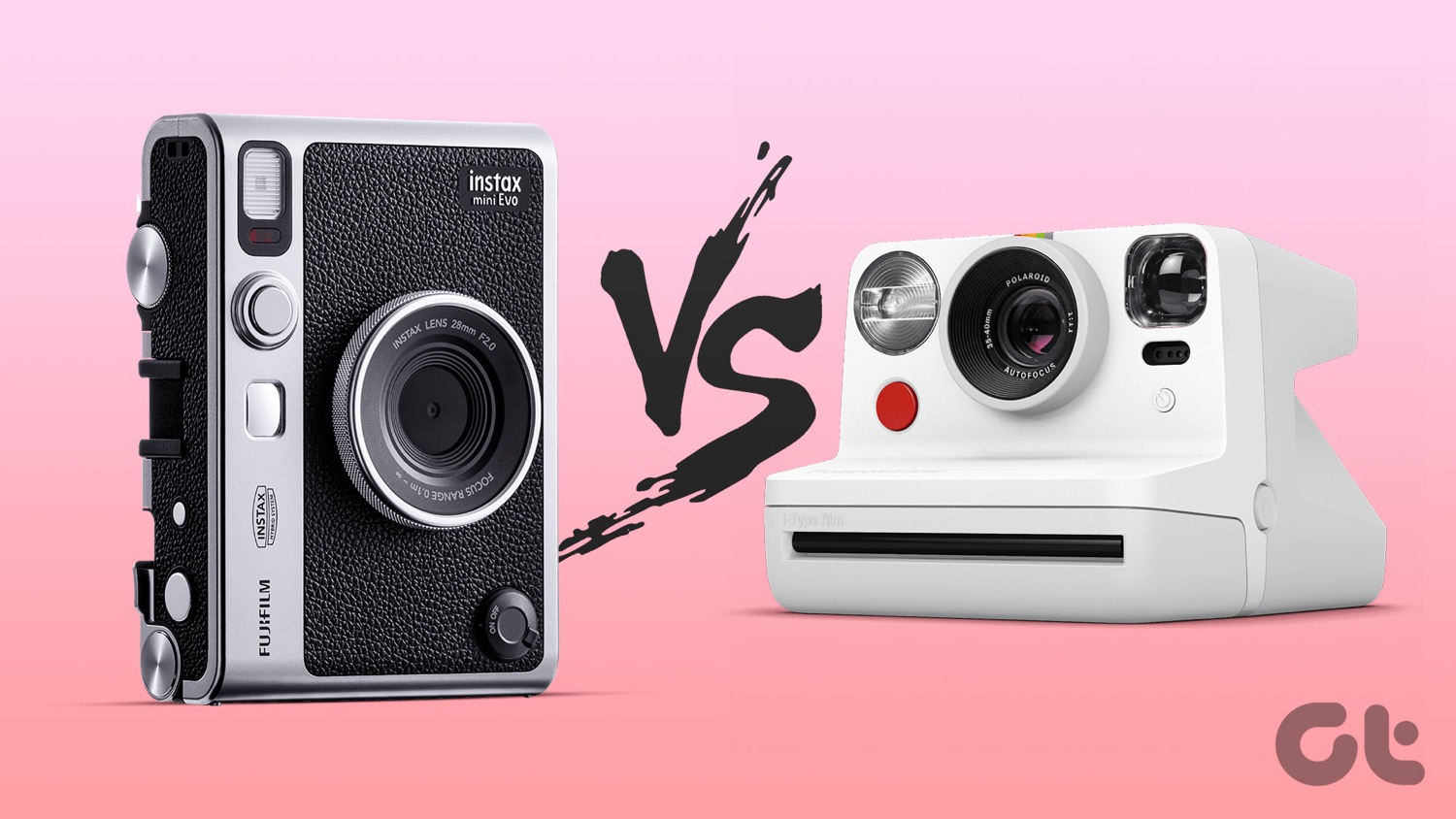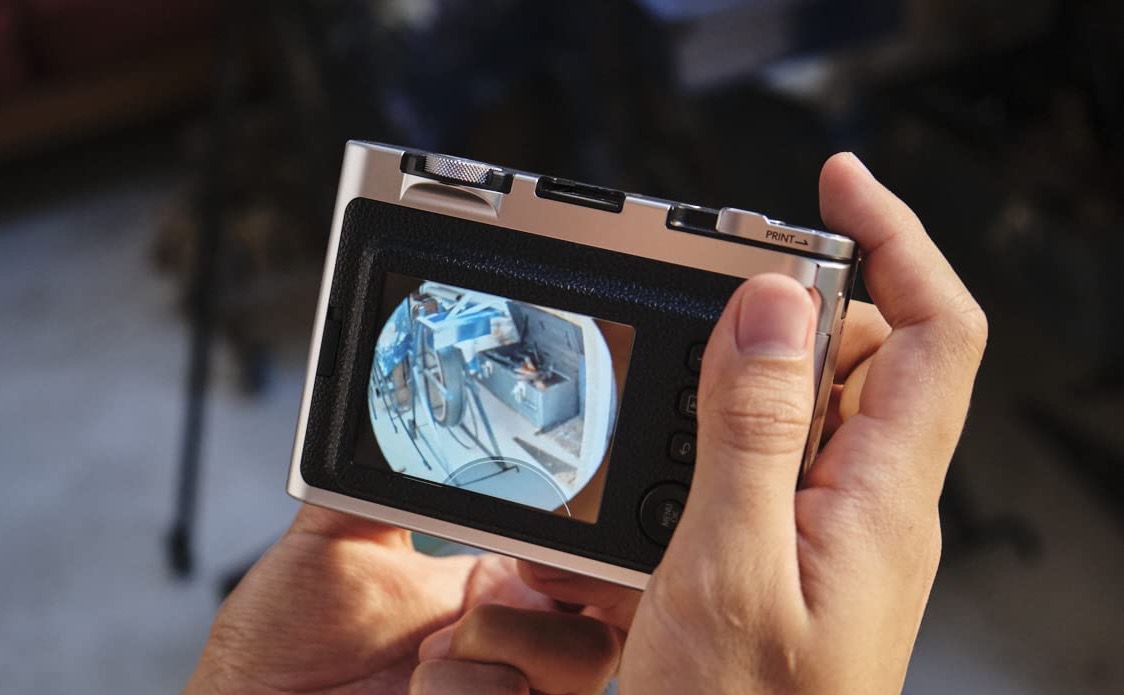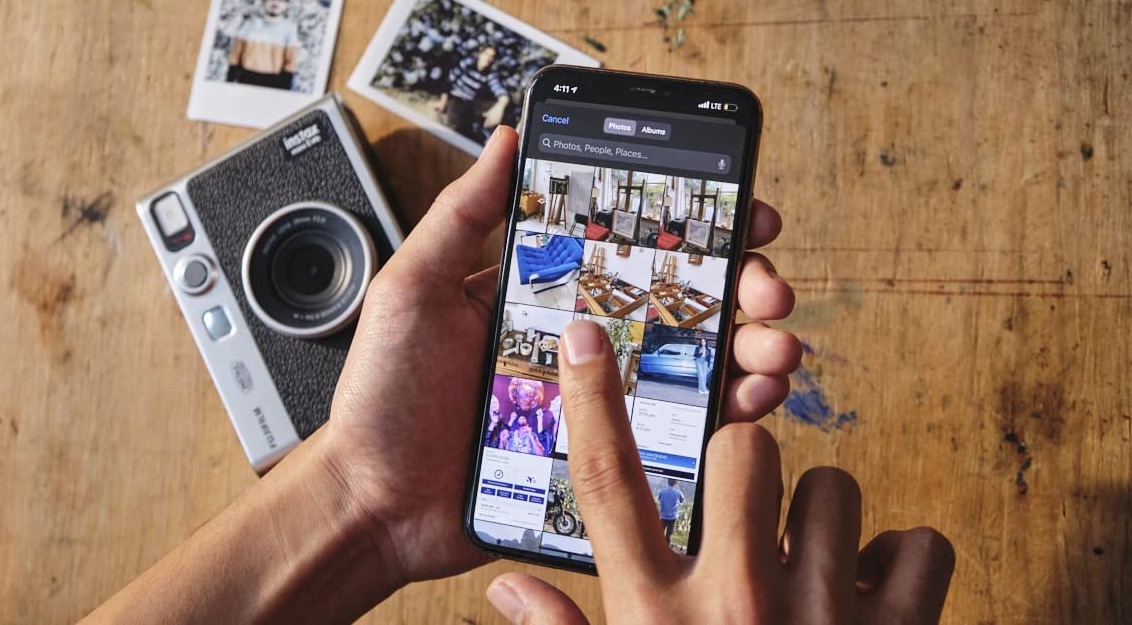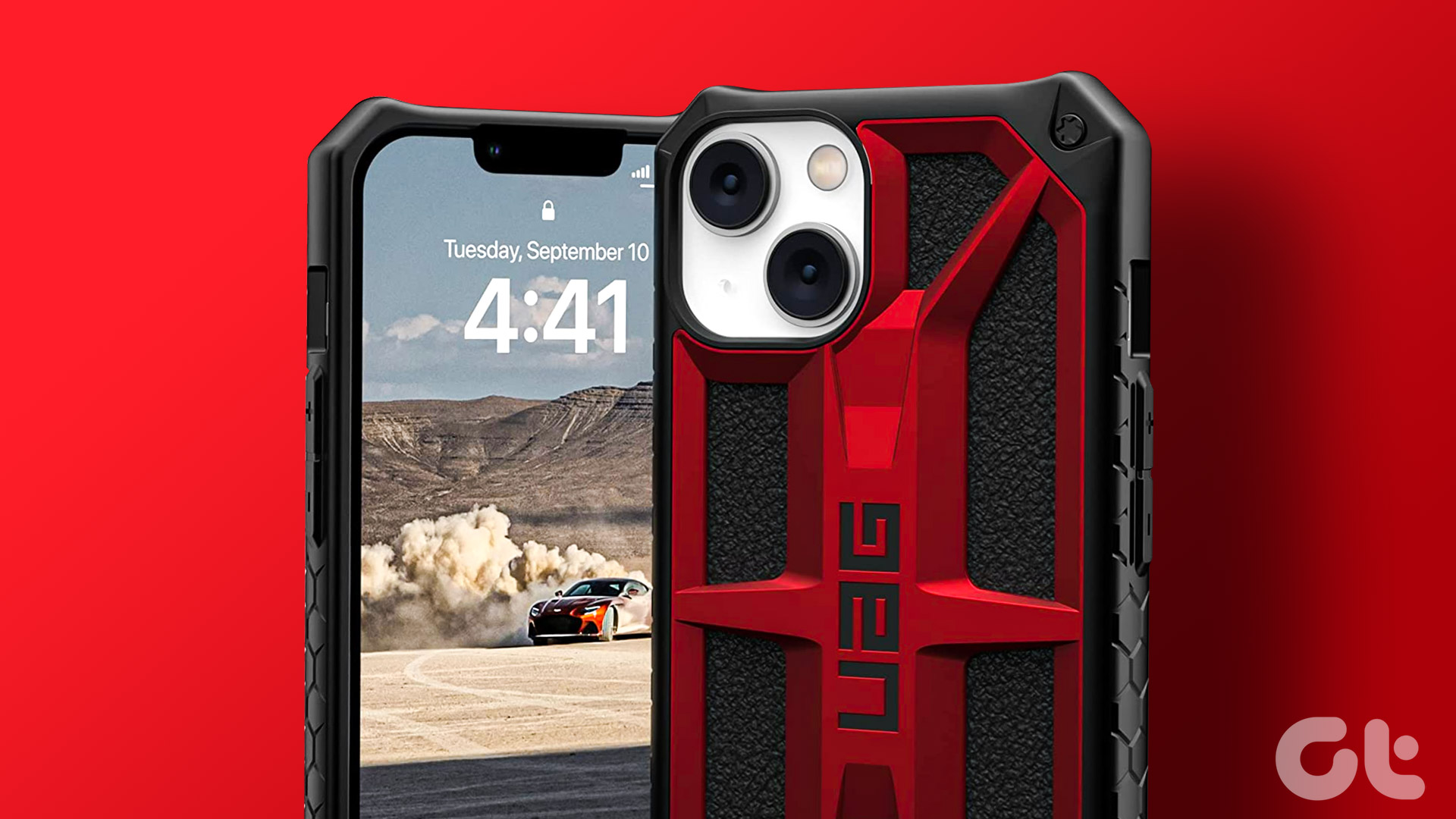The Instax Mini Evo and the Polaroid Now+ being two of the newest instant cameras to join the bandwagon. The highlight of the Instax Mini Evo is its introduction of a digital lens in an instant camera format. Another camera that has been receiving rave reviews from its user base is the Polaroid Now+.
The Polaroid Now+ is almost a year old and brings an intuitive app to the table and a quirky design. This can make anyone wonder if the Polaroid Now+ is better than the Instax Mini Evo. Or, is it the other way around?
Well, that’s what we will find in this post as we compare the Instax Mini Evo and the Polaroid Now+ to check which is the better instant camera. Since it’s going to be a long post, let’s get going, shall we? But first,
- Polaroid Go vs Fujifilm Instax Mini 11: which instant camera should you buy
- Top 5 things to check before buying an instant camera
- Print photos like a pro with these affordable photo printers
Design
The Instax Mini Evo camera brings home a vintage design with its faux leather and metal exterior. It doesn’t have a viewfinder. Even the Mini Evo doesn’t have a traditional viewfinder and instead packs an LCD screen at the back to let you view all your shots. The good part is that the screen is bright enough to be usable in daylight.
It has two shutter buttons, and you can click those perfect moments easily whether you hold your camera vertically or horizontally. Plus, the two shutter buttons also help you take selfies effortlessly. There are a couple of buttons next to the viewfinder. It can get confusing for others to use this instant camera. Luckily, it doesn’t print every shot automatically.
To print a photo, you will need to move a lever manually. It ensures that you print only the shots you’re really happy with.
The introduction of a digital sensor means that the Mini Evo is slim and easy to hold, especially when clicking selfies and cycling through the many lenses and filters.
Interestingly, the Mini Evo comes with a cold shoe mount, which allows you to mount camera accessories like a microphone and additional lighting. This Fujifilm instant camera can adjust exposure and white balance automatically. Of course, you get the option to control those features manually.
Compared to Mini Evo’s slim and sleek look, the Polaroid Now+ comes with a slightly bulky form factor. But that design gives it a distinctive look and will remind you of vintage polaroid cameras. The Now+ is also marked by the signature rainbow stripe with a viewfinder. That said, you will need to use both hands to handle this camera, even though it’s quite small compared to some of its predecessors.
There’s a single shutter button, and you will have to make do with it, despite the big shape. At the same time, it doesn’t have a selfie mirror to help you frame your selfies. On the upside, this Polaroid instant camera comes with a nifty tripod socket that allows you to experiment with photos with trailing lights, long exposure shots, etc.
Unlike the digital sensor of the Mini Evo, the Polaroid Now+ packs an analog sensor. Like its predecessor, it packs a two-lens autofocus system and has a 40mm standard lens and a 35mm close-up lens. Click the shutter button to print the photo in a few seconds.
Phone Connectivity and Battery
One of the common features between the Polaroid Now+ and the Mini Evo is that they allow you to connect your phone to the camera through Bluetooth. When it comes to the Mini Evo, you can use the phone as a shutter or check out the digital version of printed photos. Surprisingly, you can only share printed photos to your phone from the camera.
The Mini Evo also lets you stick a MicroSD card to store extra photos. The advantage of this mechanism is that you can transfer photos directly from the camera to your laptop/computer and eventually to your phone. Without external storage, the Mini Evo can hold only up to 45 images.
Like the Fujifilm app, the Now+ companion app also doubles as a shutter. Moreover, it lets you adjust your camera settings, like the exposure or aperture.
In short, the camera companion apps do not let you do much like the companion apps of instant printers or smart home products. Rather, they are just an extension of the camera’s shutter button and let you see minor things like battery level.
Battery
When it comes to the battery, the one on the Mini Evo can see you through a casual week of photography. It doesn’t use AAA or AA batteries. Instead, this Instax instant camera charges over a micro-USB cable and can take upwards of 2 hours to charge.
The same is true of the Polaroid Now+. It comes with an internal battery that takes about an hour to charge, less than the Mini Evo. At the same time, it lasts through some 15 packs of film before running out of charge.
Features
Instant cameras are about more than just printing your photos in minutes. Today, instant cameras come with many features, be it external storage or selfie timers (see best instant cameras with selfie timers). And the Fujifilm Instax Mini Evo and the Polaroid Now+ are no different.
The Mini Evo’s main highlight is the filters and lens effects. It has more than 100+ filters which you can access through the buttons near the LCD lens or by switching the dial on the lens. Naturally, these give a vintage camera-like vibe to the camera.
While the Polaroid instant camera also comes with its share of filters, they are not as easy as changing the dial of the lens.
The company ships a set of physical lenses which you can slip onto the lens. For now, there are a few colored filters that you can experiment on and a filter to add a vignette effect to photos. In short, you have a fun ensemble of filters. But you must go through the process of bringing them with you every time you step out to click photos.
Performance
So, let’s address the elephant in the room—Photo Quality. But before we get down to it, let us tell you that instant camera photos lean more toward the vintage side of photos. They are not as sharp or detailed as their digital counterparts.
That said, the Instax Mini Evo captures the colors and contrast levels. Of course, it doesn’t have as many details as its digital counterparts, but the folks at Tech Radar opine that the photos are well-defined and sharp compared to their older counterparts.
The good thing is that Fujifilm Now+ also delivers punchy and vivid images. However, all the images have a slight vintage look that the photos from the early days of the 90s and late 80s. Here too, the folks at PC Mag argue that Polaroid films lack a little in the vivid and punch department.
That said, you can always switch to different film types (e.g. monochrome) to add a touch of fun.
Cost per Film
One of the greatest advantages of the Mini Evo is that you can choose which photos to print. Naturally, this saves you money and film in the long run. You can check out the photo on the small LCD screen. If you are not happy, you can skip printing the image. That said, a twin pack of Instax film costs about $13.98, and a single photo will cost you about $0.70.
On the other hand, Polaroid Now+ supports I-Type instant films. A typical I-Type film pack of 8 costs about $ 16.93, which makes it around $2.12/photo. Naturally, this makes it a costly affair.
Fujifilm Instax Mini Evo vs Polaroid Now+
So, which one will you choose? Well, if you want a true instant camera with an evolved camera body, the Polaroid Now+ is your best bet. The unique camera body looks great and the photo quality quite decent. However, you do not have the luxury to choose the photo you print.
On the other hand, if you want the perfect concoction of a digital camera and an instant camera, the Fujifilm Instax Mini Evo is your answer. The film cost is a tad on the lower end, compared to I-Type films. Plus, you can choose to print the photos you want and transferring the photos via the SD card. However, do note that the digital photos do not have as much detail as the printed ones.
Last updated on 02 January, 2023
The above article may contain affiliate links which help support Guiding Tech. However, it does not affect our editorial integrity. The content remains unbiased and authentic.

















